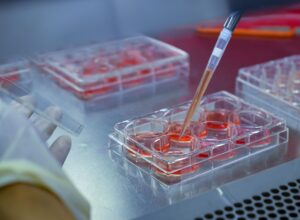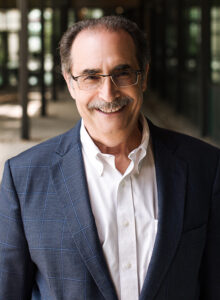Writer: Jerrica DuBois
 2 min read January 2023 — Biomedicine, research and technology are a core component of San Antonio’s economic framework and strength. Randy Harig, CEO of Texas Research & Technology Foundation, and Larry Schlesinger, president and CEO of Texas Biomedical Research Institute, spoke with Invest: about the current opportunities in the sector and the challenges related to growth.
2 min read January 2023 — Biomedicine, research and technology are a core component of San Antonio’s economic framework and strength. Randy Harig, CEO of Texas Research & Technology Foundation, and Larry Schlesinger, president and CEO of Texas Biomedical Research Institute, spoke with Invest: about the current opportunities in the sector and the challenges related to growth.
What are the greatest opportunities in the biomedical sector right now?
Randy Harig: Biotech is a fastest-growing sector and one of the most predominant in this region. We have both public and private entities here and we also have the military and the medical sectors. We enjoy about 60% of the assets of the Department of Defense that are in medical delivery and medical research. So, when you combine the private, public and government sectors, we have a great story to tell. San Antonio is a leader in certain areas, such as biologics, regenerative health, combat critical care, infectious disease, and aging. We now have a playbook on who to recruit to be part of this ecosystem.
 Larry Schlesinger: We’re targeting advanced technologies that allow development of more diagnostic therapies and vaccines so we can be more proactive than reactive to the next outbreak that comes along and not be resource-limited like we often are in the public health sector. Generally, biomedical research is in the midst of an exciting time because it’s advancing the concept of team science more than ever before. It’s integrating technologies that are not only basic science models but models that recapitulate human health and disease. We’re developing alternative models to help our pipeline of discovery and translation. Technology will bring us forward.
Larry Schlesinger: We’re targeting advanced technologies that allow development of more diagnostic therapies and vaccines so we can be more proactive than reactive to the next outbreak that comes along and not be resource-limited like we often are in the public health sector. Generally, biomedical research is in the midst of an exciting time because it’s advancing the concept of team science more than ever before. It’s integrating technologies that are not only basic science models but models that recapitulate human health and disease. We’re developing alternative models to help our pipeline of discovery and translation. Technology will bring us forward.
What are some of the challenges related to growth in the industry?
Harig: The challenge for the bio sector is the amount of money and the time it takes to do anything. We work with a lot of startups and pure technology or SaaS programs. There are seven to 10 years for incubation. That is one of the challenges for investors as there are a lot of opportunities in tech in Texas for short-term investments and short-term gain. So, it’s always a bit of a challenge to get investors to think longer term. Even though there can be some significant returns, it is a challenge.
Schlesinger: Success has bred its own share of struggles. When you emerge with bold ideas and innovations like we have, it creates stress on the institution based on capacity. Our fundamental focus moving forward is building capacity, both in facilities and talent. We are recruiting locally and globally because an A-level organization recruits A-level talent throughout. Our key campaign is to advance our modernization of the campus. It’s necessary to make San Antonio reach out to the world and for us to do the same. This intense focus is aimed at aligning all that demand with a strategy for growth and capacity. Infectious diseases are quickly becoming the leading global cause of death and we must be ready. Texas Biomed is positioning itself to become the unrivaled leader in the field so everyone might one day live free from the threat of infectious disease. That’s what we are striving toward each and every day.
Considering the current labor challenges, what are the strategies that are in place for hiring and retaining talent?
Harig: Fortunately, we have been lucky in that regard because the talent that we have needed has been available to us, although we do recognize the need to focus on specific training for jobs today and tomorrow.
Last year, we developed a program to go into the middle schools and talk about the opportunities available to students when they take math, biology and chemistry. We’re in 56 schools with an expectation of being in over 80 next year and they’re predominantly in the school district that we sit in. Some conversations say over 60% of these kids are at-risk. The goal of this program then is to create awareness about the STEM jobs that are out there. As part of that, we’re trying to bring in managers and coaches who look like them so they can see that they have a real opportunity.
How are partners in the industry leaning on Texas Biomed for support and collaboration?
Schlesinger: It’s about doing more regulated studies. If there are new therapies we want to bring to market, you can’t just bring them to humans, you have to go through a series of rigorously reviewed studies. The number of individuals contacting the Institute for research opportunities has expanded greatly. We have 400 employees. In 2021, our total grants and contract portfolio crossed $100 million, a first in our history, and it demonstrates the major demand in the field. On the other hand, it’s about educating the public. We have a major crisis in vaccine hesitancy globally. We are seeing a decrease in the number of children getting vaccinated to prevent routine childhood disease. This is a crisis in which we all need to do better.
For more information, visit:

